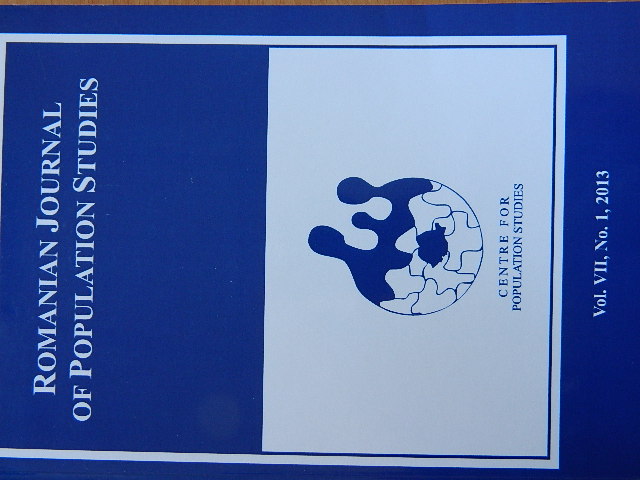Social and Economic Factors of Romanian External Migration. Preliminary Statistical Analysis: Comparison between the Counties
Social and Economic Factors of Romanian External Migration. Preliminary Statistical Analysis: Comparison between the Counties
Author(s): Viorel SîrcaSubject(s): Social Sciences
Published by: Centrul de Studiere a Populaţiei
Keywords: international migration; transnational migration; multidisciplinary; macro; medium and micro-social approach of migration; tendencies of migration; migration structural factors.
Summary/Abstract: The starting point of our essay refers to the listing of the main theoretical and disciplinary currents in the studying of migration, having as background the aim of integrated approach (Sociology, Demography, Economics, Legal Science, Political Science, Anthropology, and Social Psychology). The disciplinary one–sidedness that dominates most of the migration analysis is partially solved by a few theoretical currents and examples oriented towards interdisciplinary trends – the theory of cumulative causality, the institutional theory, the theory of world systems (Sociology, Demography and Economics) -, and furthermore unifying theoretical orientations such as the theory of migration systems and the multidisciplinary approach. Although not herein detailed, the analysis of Romanian external migration makes reference to these theoretical trends and to their corresponding migration patterns. They are very useful for explaining, from various points of view, the tendencies of contemporary migration, through their multi-factorial essence and furthermore for the preliminary statistics’ analysis (pilot) regarding permanent emigration, by comparing the situation in two counties – Cluj and Suceava. This represents the foundation for a more complex research that is on the verge of being performed1. Although the permanent migration phenomenon displays certain immediate benefits (economic and social interests of remittances, and, to a certain extent the cultural loan from Western countries, in the form of patterns of social and economic progress as well as of diversity), its long and medium term demographic and social and economic effects are rather negative, especially caused by the decrease of the young and active population as well as by the brain drain phenomenon. Finally, we approach recent tendencies in the manners of studying the international migration phenomenon relying on specialized literature.
Journal: Romanian Journal of Population Studies
- Issue Year: 7/2013
- Issue No: 1
- Page Range: 47-75
- Page Count: 27
- Language: English
- Content File-PDF

